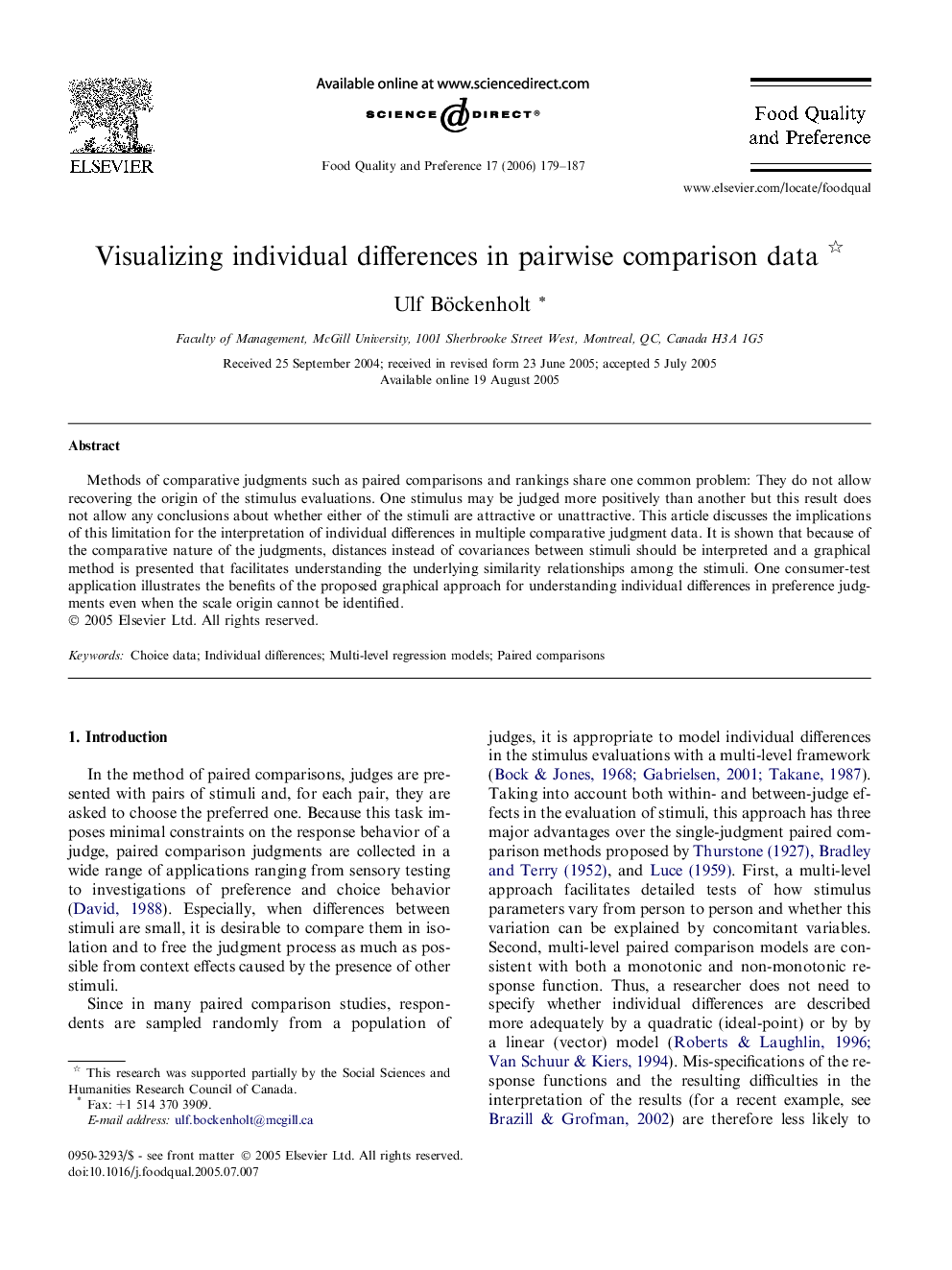| Article ID | Journal | Published Year | Pages | File Type |
|---|---|---|---|---|
| 4318281 | Food Quality and Preference | 2006 | 9 Pages |
Methods of comparative judgments such as paired comparisons and rankings share one common problem: They do not allow recovering the origin of the stimulus evaluations. One stimulus may be judged more positively than another but this result does not allow any conclusions about whether either of the stimuli are attractive or unattractive. This article discusses the implications of this limitation for the interpretation of individual differences in multiple comparative judgment data. It is shown that because of the comparative nature of the judgments, distances instead of covariances between stimuli should be interpreted and a graphical method is presented that facilitates understanding the underlying similarity relationships among the stimuli. One consumer-test application illustrates the benefits of the proposed graphical approach for understanding individual differences in preference judgments even when the scale origin cannot be identified.
